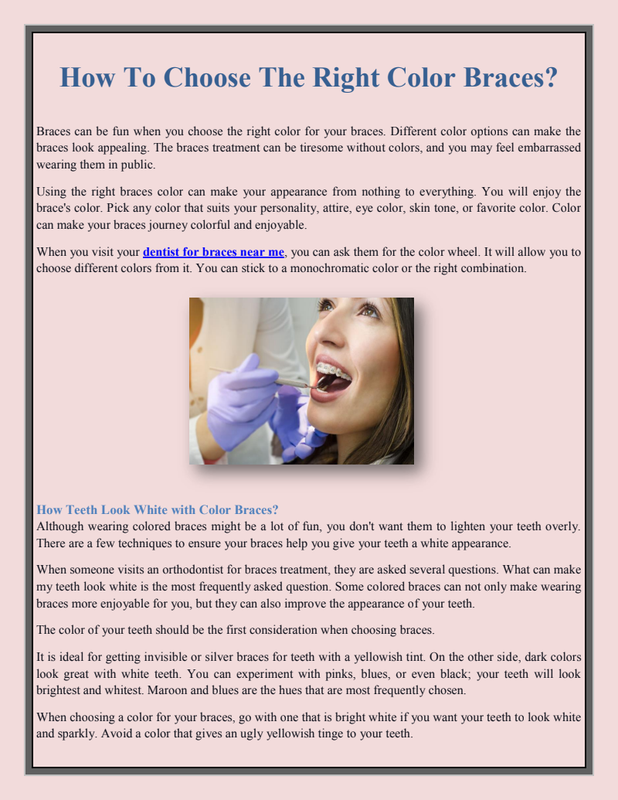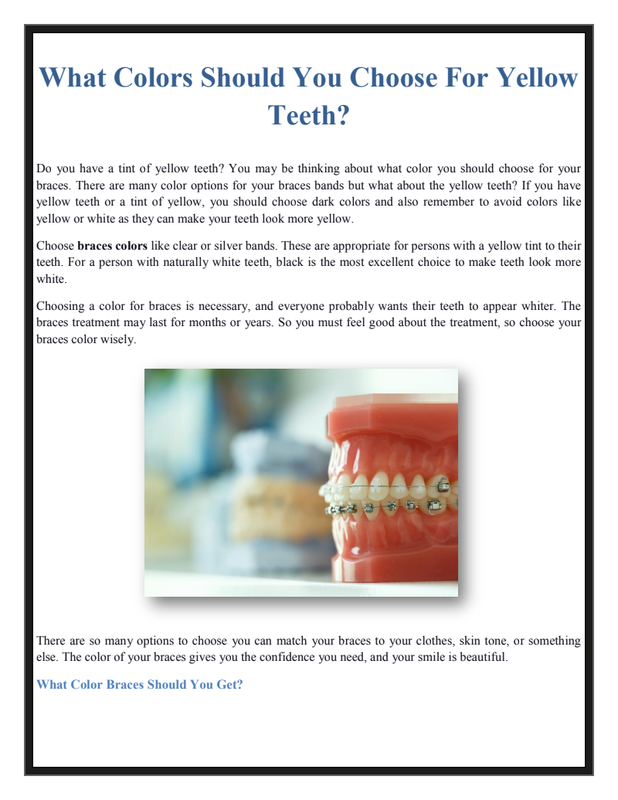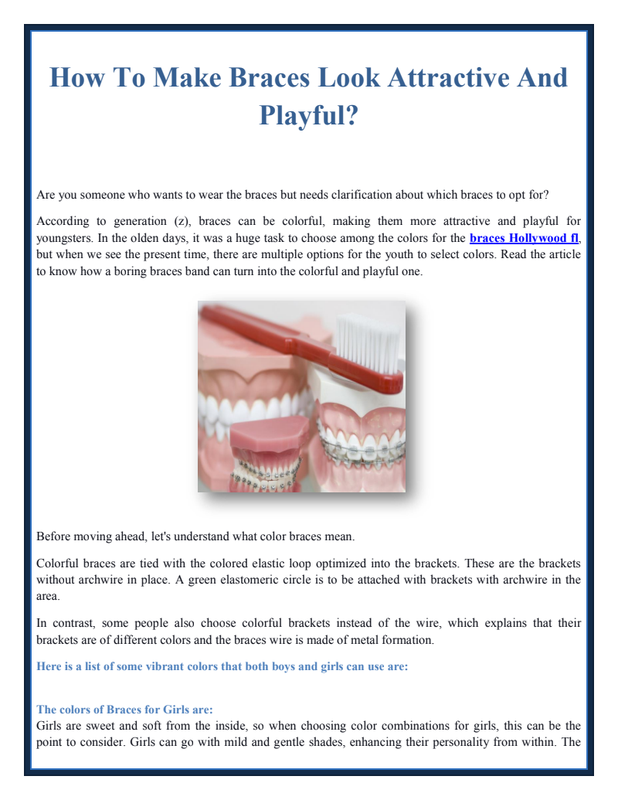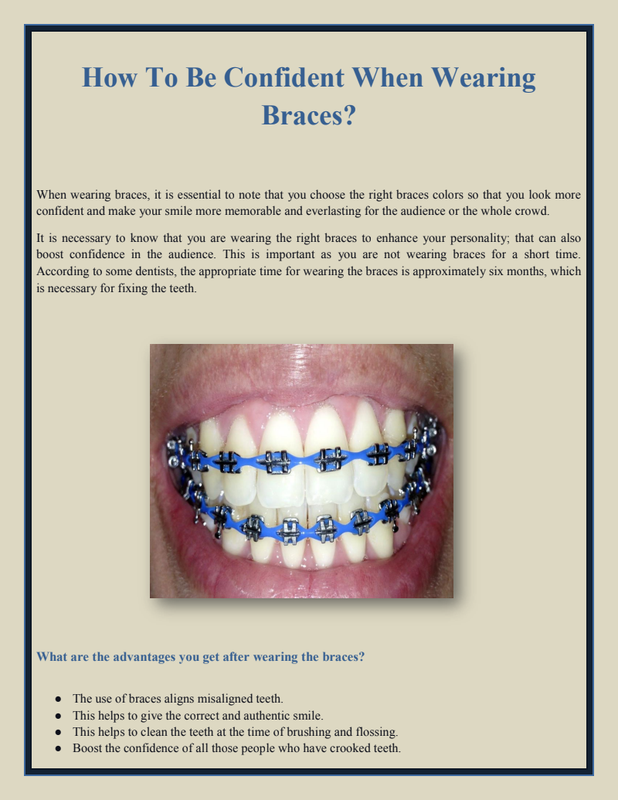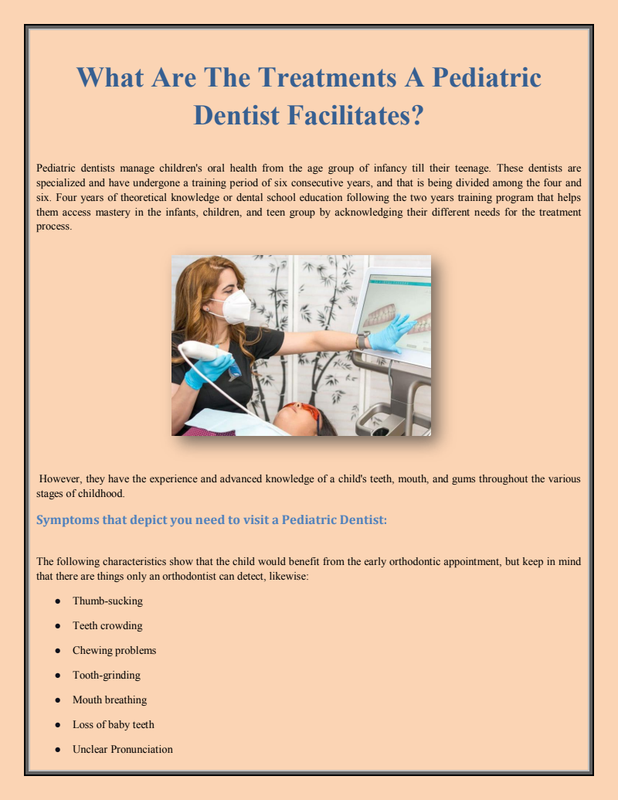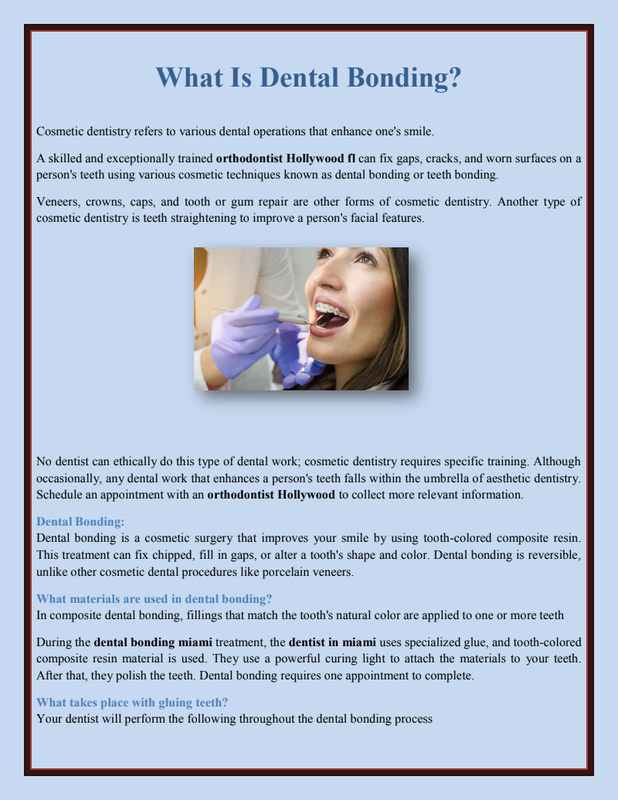What Are The Essential Things You Should Know About Bite Turbos?
Have you just got your braces or whatever on, and you feel these weird blue things behind your teeth?
They need to be more chunky and mess with your bite. Don't worry; you're not the only one! Those blue things are called bite turbos or bite ramps in fancy orthodontic language and usually are at the beginning of treatment.
What are bite turbos?
A bite turbo is an orthodontic device that is used by the orthodontics specialists of florida to move your teeth into the correct position. These small types of L-shaped or triangular devices attached to the back of the teeth prevent contact with the incorrect bite. These turbos also prevent the teeth from damaging the braces and teeth, speeding up the progress.
What are the advantages of the bite turbos?
Bite turbos, or bite ramps or blocks, are dental appliances designed to help correct bite problems. They are typically made of acrylic and are placed on the back teeth in either the upper or lower jaw. Here are some of the advantages of bite turbos:

- Bite turbos can help improve braces' fit by reducing the space between the upper and lower teeth.
- They can help prevent the front teeth from hitting each other, which can cause excessive wear and tear on the teeth.
- Bite turbos can help prevent the lower jaw from moving too far forward, which can cause discomfort and other problems.
- They can help correct bite problems such as overbite, underbite, and crossbite.
- Bite turbos can help speed up orthodontic treatment by allowing for more efficient tooth movement.
- They are relatively easy to place and remove and are typically well-tolerated by patients.
What is the risk invloved in the bite turbos ?
But, the correct answer to this is that bite turbo has no risk involved. Yes, it might take a few days for your body to adapt to the changes, and this will bring little change to your oral problem. This also depends on the body to body that how the changes and how quickly or fast they adapt to the changes.
Which food to eat after the procedure?
After getting orthodontic treatment, it is essential to be mindful of the types of foods you eat. During the initial adjustment period, the best orthodontics near me recommended consuming soft and mushy foods. Such foods will be easier to chew and won't cause discomfort or pain. Soups, applesauce, purees, smoothies, yogurt, scrambled eggs, and soft macaroni and cheese are great options.
As your bite becomes less awkward, you can transition into more solid foods that are still cut into smaller pieces. This will help you to avoid putting too much pressure on your teeth and brackets. By the second appointment, you will likely feel much more comfortable as more teeth will be touching, and the bite will feel more natural.

Summing it up :
When orthodontists place bite turbos on your front teeth, your back teeth won't meet appropriately while you chew the food. And if the orthodontist places them on the back teeth, your front teeth won't come near. Although, this situation is temporary. In such conditions, your orthodontist may recommend eating soft food that will allow you to tackle this situation. Moreover, it might cause difficulty in your speech, but you can speak correctly within a week.
Schedule an appointment with the orthodontist in aventura florida to get the most suitable treatment to straighten the teeth and smile confidently.
Article source : https://www.invisibleparticles.com/what-are-the-essential-things-you-should-know-about-bite-turbos/
What Are The Positive Effects Of Using Dental Bonding?
We all know that a dazzling smile is the ultimate confidence booster, but what if your teeth are chipped, broken, or discolored?
Cosmetic dentistry has got your back, and tooth bonding is the answer to all your worries.
Tooth or dental bonding Miami is like a magic wand that can repair all your dental problems in just one visit. This painless procedure can fix chips, fractures, and discoloration, giving you a perfect, worthy smile that will make heads turn.
Imagine walking into a room with your new and improved smile, feeling like a million bucks and radiating confidence. You'll be able to connect with people effortlessly and explore the best version of yourself.
So, if you're ready to transform your smile and boost your self-esteem, tooth bonding is the way to go!
It's a simple, hassle-free solution that will give you the confidence to take on the world.
What is the Dental Bonding?
Dental Bonding is called composite bonding or teeth bonding. This is a cosmetic procedure used to enhance your look. Because during this procedure, your dentist applies white color resin material to the affected area to change its shape, color, and size.
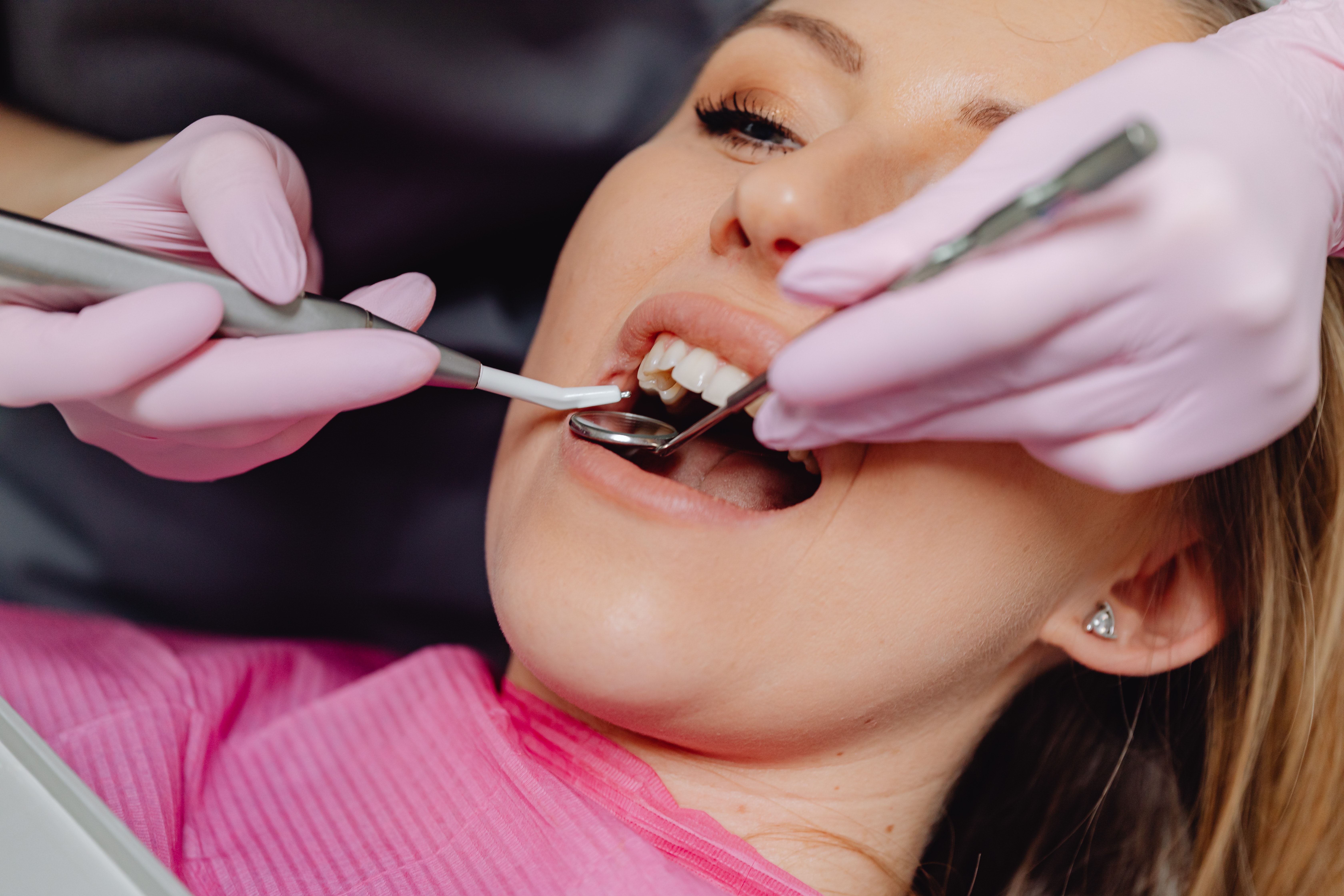
This technique is commonly utilized to address various aesthetic concerns, such as chipped, cracked, discolored, or misshapen teeth. The bonding material is carefully sculpted and polished to create a seamless, natural-looking result that blends with the surrounding teeth. Dental Bonding is a minimally invasive and cost-effective solution for achieving a more radiant and confident smile offered by the dentist Miami shores.
What are the benefits of dental Bonding?
- Quick treatment for correcting smile.
- Does not require customization.
- It requires the least amount of dental enamel when compared to dental veneers.
- Painless and does not require anesthesia.
- Does not require the removal of a healthy tooth surface.
What is the difference between dental Bonding and dental veneers?
- Dental Bonding and dental veneers are both cosmetic dental procedures used to improve the appearance of teeth.
- Dental Bonding by orthodontist hallandale fl involves applying tooth-colored composite resin to the surface of a tooth and shaping it to improve the tooth's appearance.
- Dental veneers are thin, custom-made shells of porcelain or composite resin bonded to a tooth's front surface to improve its appearance.
- Bonding typically addresses minor cosmetic issues such as chips, cracks, and discoloration. In contrast, veneers are used for more significant cosmetic problems such as large gaps, severe discoloration, and misshapen teeth.
- Bonding is a less expensive and less invasive procedure than veneers, but veneers tend to last longer and provide a more significant improvement in the appearance of the teeth.
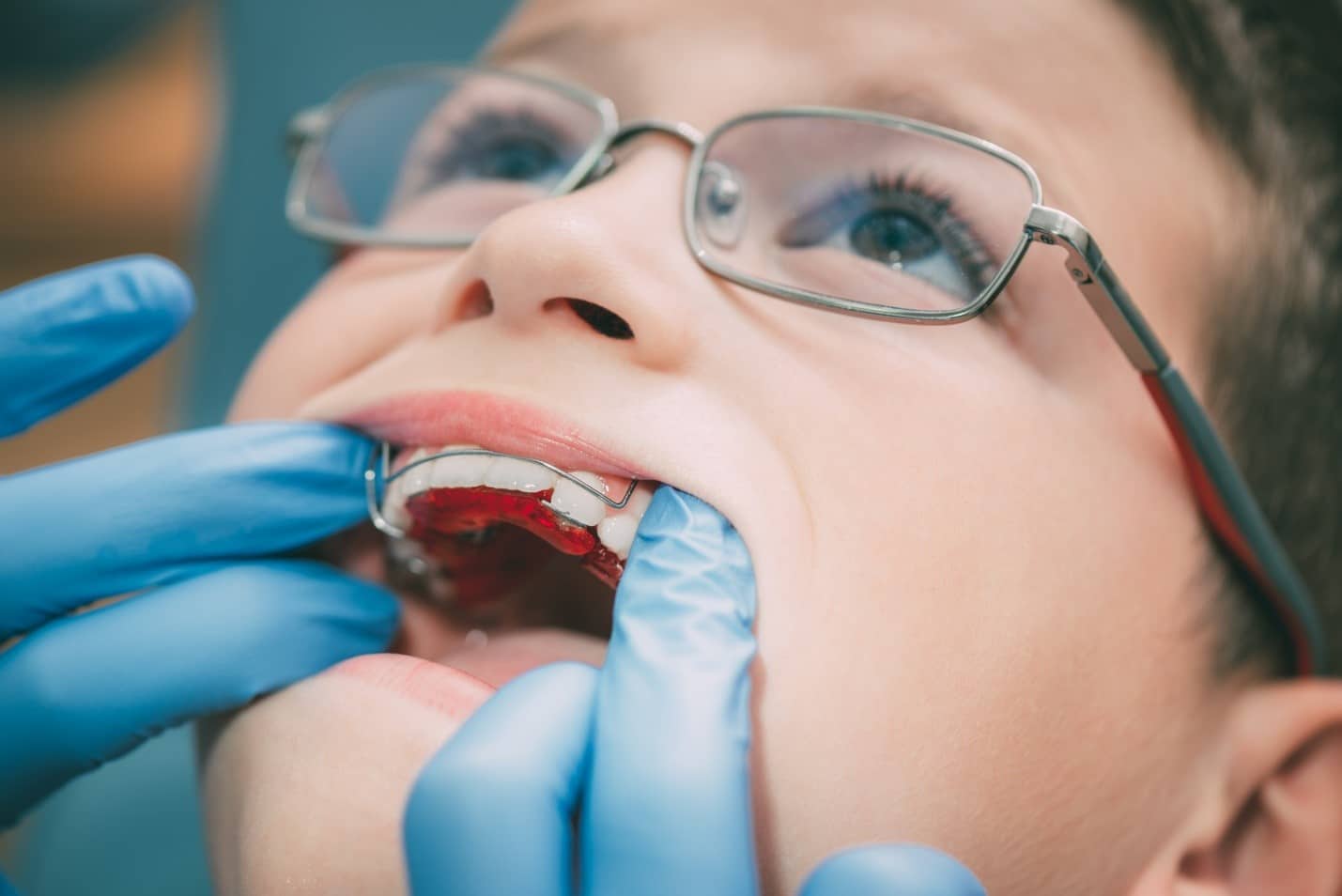
Summing it up :
So, how long will my new pearly whites last? Well, it's hard to say for sure, as it depends on a few factors, like how well you care for them and how many teeth were treated. But on average, you can expect your bonding material to hold up for about 3 to 10 years before needing a little tune-up or replacement.
But let's focus on the positives, shall we?
Teeth bonding can make a big difference in your smile game. Not only can it fix chips and cracks, but it can also improve the appearance of discolored or misshapen teeth. Plus, it's a painless process and usually only takes one visit to your dentist.
So if you want to boost your confidence and get a grin from the Miami shores dentist that'll make others envious, teeth bonding could be just the ticket. And with proper care, you'll be flashing those pearly whites for years.
Article source : https://www.apostolicfashions.com/what-are-the-positive-effects-of-using-dental-bonding/
